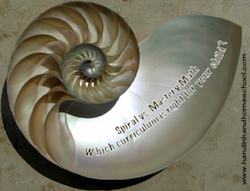 Math curriculum falls within two broad categories: spiral and mastery. A number of important differences exist in how math is taught by these two philosophical approaches. Understanding these differences, and knowing how well they may work for your child, will help you select the best homeschool math curriculum for your family.
Math curriculum falls within two broad categories: spiral and mastery. A number of important differences exist in how math is taught by these two philosophical approaches. Understanding these differences, and knowing how well they may work for your child, will help you select the best homeschool math curriculum for your family.
A mastery approach begins with the idea that each child needs to be at the right cognitive and developmental level before they can learn certain material. This type of curriculum introduces one idea at a time and has the child learn it thoroughly before moving on to the next idea in the sequence.
A spiral approach, on the other hand, believes that children can learn any idea, as long as it is initially presented in a simplified way. Spiral curriculum takes complex ideas, breaks them down into very tiny chunks, and continues to revisit the concepts over a long period of time. It is not unusual for a spiral math curriculum to take more than two years to teach multiplication, for example.
| SPIRAL | MASTERY |
|---|---|
| No expectations of full comprehension the first time an idea is introduced | Math ideas are introduced one at a time and build upon one another |
| Minimal practice when an idea is initially introduced | Concepts are practiced until a child has learned them thoroughly |
| Continual repetition of a concept over a long period of time | Each chapter generally has a short review section to help students remember and practice previously learned material |
| Avoids going in-depth into a topic until later grades | Some math topics are reserved until a child reaches a certain level of cognitive development |
| Students frequently change topics within the math curriculum | Good math choice for students interested in math, science, or engineering fields |
| Good math choice for students looking to enter a non-mathematical career |
Ready to buy a math curriculum, but not sure what grade level you should start with? Start with a free online placement test today.
Last modified on May 21, 2020




